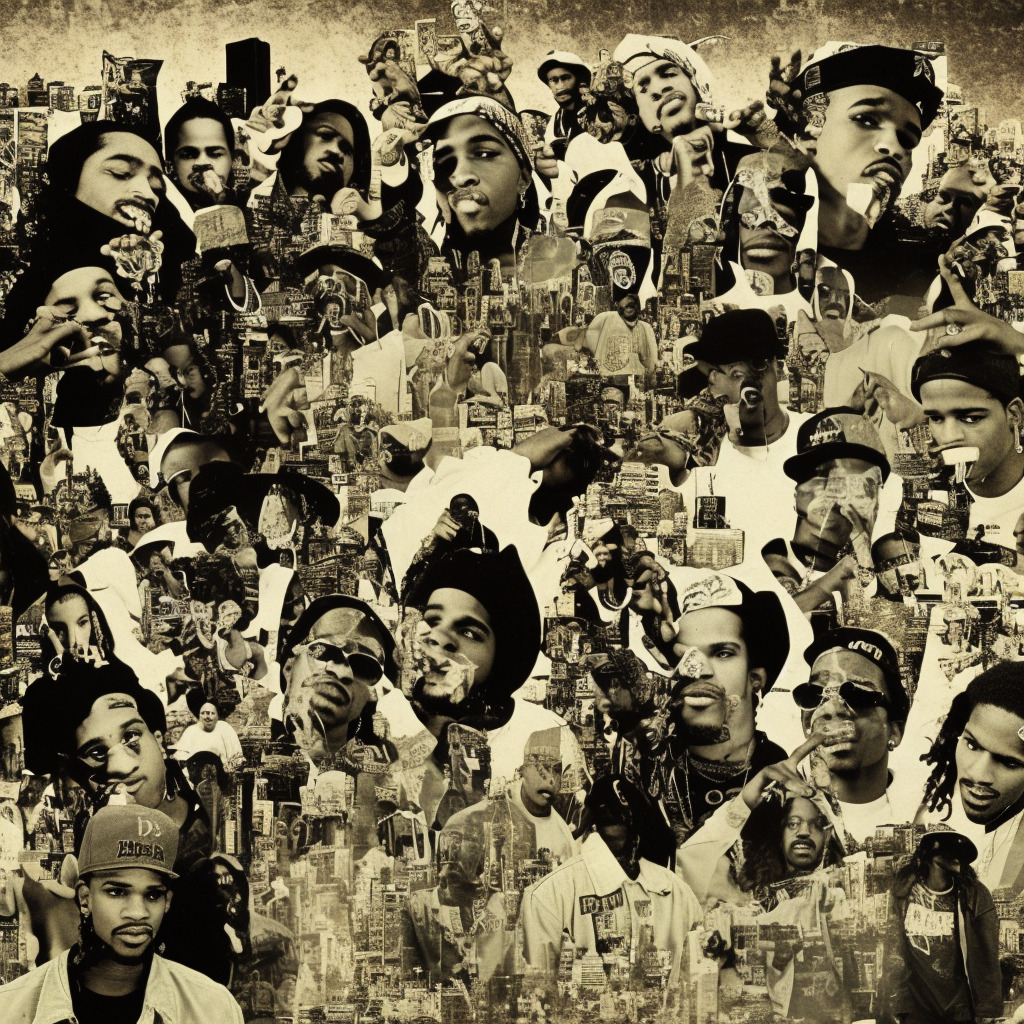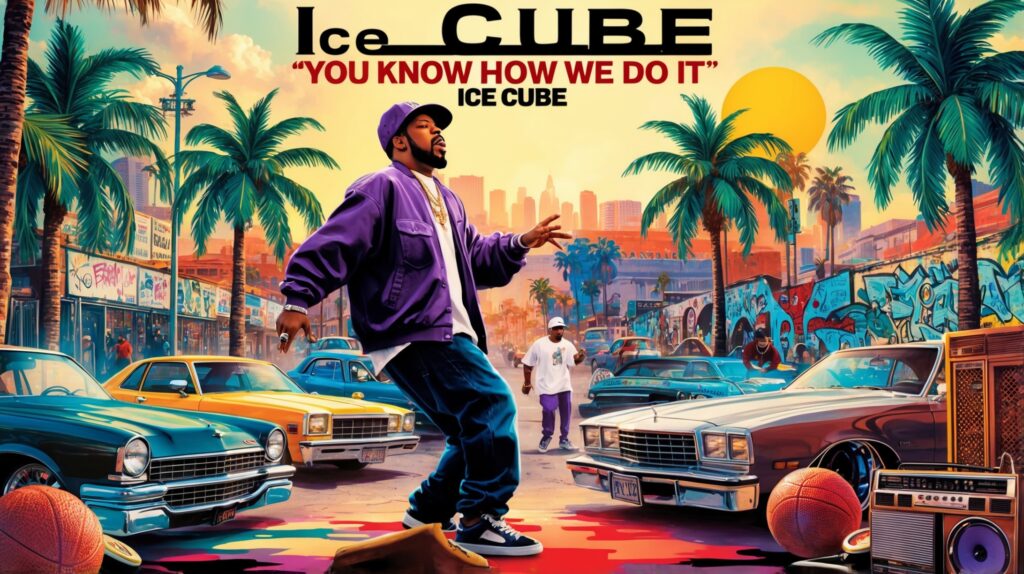? “Mo Money Mo Problems” turns 24! ? Did you know Biggie’s iconic line “I don’t know what they want from me” was inspired by Diana Ross’ “I’m Coming Out”? ?? A classic that only gets better with age! ? #TheNotoriousBIG #MoMoneyMoProblems #90sHipHop #MusicTrivia Read about it: tinyurl.com/ap7edted
Biggie’s Timeless Hit Explores the Dark Side of Wealth
Biggie’s cautionary tale of fame’s dark side – “Mo Money Mo Problems” – remains a timeless hip-hop masterpiece, reflecting his unparalleled talent and lasting influence.
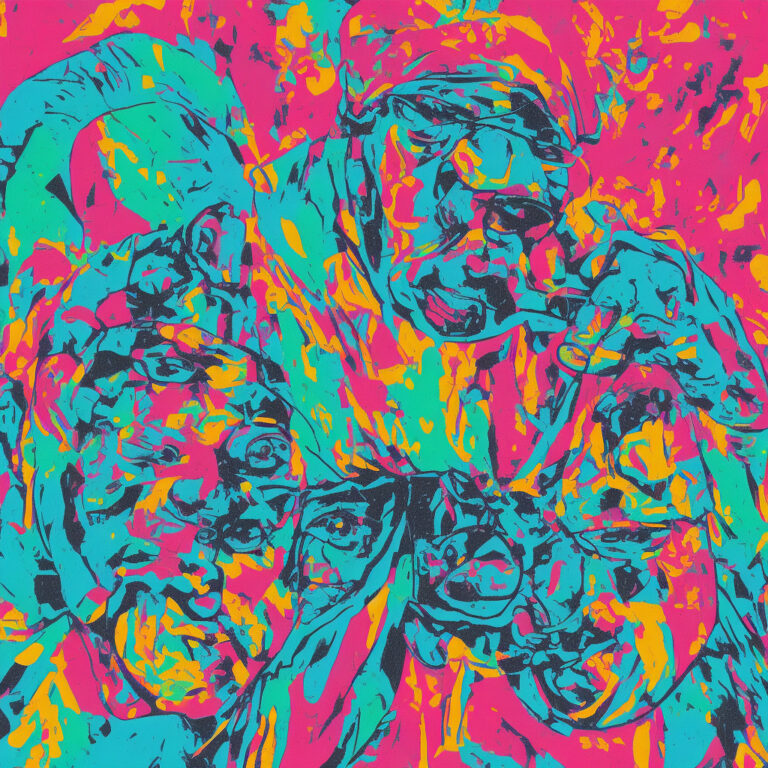
The Notorious B.I.G., also known as Christopher Wallace, was an iconic figure in the world of hip-hop, leaving an indelible mark on the genre in his short but illustrious career. Born and raised in Brooklyn, New York, Biggie Smalls became a fixture of the East Coast hip-hop scene in the mid-’90s. His debut album, “Ready to Die,” released in 1994, was both a commercial success and a critical darling, earning him a place as one of the greatest rappers of all time.
One track that particularly stands out from his discography is “Mo Money Mo Problems,” which was released posthumously in 1997 as the second single from his second album, “Life After Death.” The song, featuring guest appearances from Puff Daddy and Mase, topped the Billboard Hot 100 chart for two weeks and was nominated for a Grammy Award for Best Rap Performance by a Duo or Group in 1998.
“Mo Money Mo Problems” deals with the darker side of wealth and success, highlighting the struggles that come with fame and fortune. With clever wordplay and introspective lyrics, Biggie Smalls delivers a cautionary tale about the pitfalls of materialism and the difficulties that arise when success becomes a double-edged sword.
The production on “Mo Money Mo Problems” is also noteworthy, with its infectious beat and the unforgettable sample of Diana Ross’ “I’m Coming Out.” The track was produced by legendary producer, Stevie J., who also worked with artists such as Faith Evans and 112, making it a standout example of the luxurious and polished sound that characterized the Bad Boy Records era.
Despite his immense talent and contributions to the genre, The Notorious B.I.G.’s career was far from flawless. One of the major criticisms of his work stems from the controversial nature of his lyrics, which often delved into misogyny and violence. Additionally, his entanglement in the infamous East Coast-West Coast hip-hop rivalry that culminated in the tragic deaths of both Biggie himself and his West Coast counterpart, Tupac Shakur, casts a shadow on his legacy.
Nevertheless, The Notorious B.I.G. received numerous accolades throughout his career. In 1995, he was awarded Billboard Music Award’s Rap Artist of the Year and Rolling Stone named “Ready to Die” one of the 500 Greatest Albums of All Time. His impact on the hip-hop genre cannot be overstated, and songs like “Mo Money Mo Problems” serve as a reminder of his unique talent and the lasting influence he left on the music world.
Charting the Success of an Iconic Anthem
“Mo Money Mo Problems: The Notorious B.I.G.’s enduring anthem that conquered charts and hearts, leaving an indelible mark on hip-hop history.”
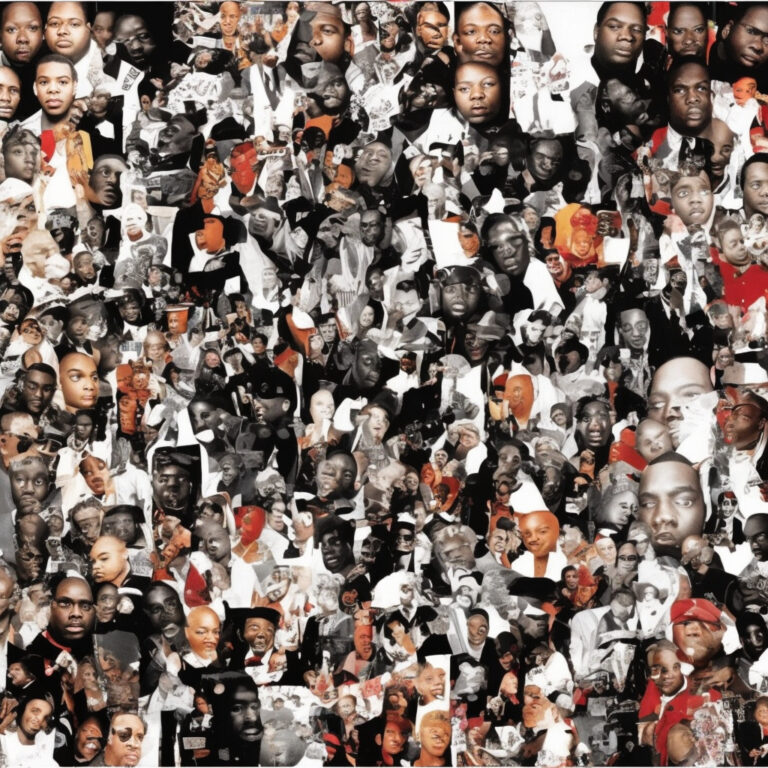
The Notorious B.I.G.’s “Mo Money Mo Problems” proved to be a massive hit, both commercially and critically, in the late 90s. Released on June 27, 1997, this iconic track quickly climbed the charts, making its presence felt in the music industry. The song served as the second single from The Notorious B.I.G.’s second and final album “Life After Death,” which was released posthumously after the rapper’s untimely death on March 9, 1997.
Upon entering the charts, “Mo Money Mo Problems” made a strong debut at No. 2 on the Billboard Hot 100, showcasing the undeniable impact of The Notorious B.I.G.’s music. It didn’t take long for the track to reach the top spot, as it eventually peaked at No. 1 on the Hot 100 chart on August 30, 1997. The song held its position for a remarkable two-week run.
In addition to its success on the Hot 100 chart, “Mo Money Mo Problems” also dominated the Hot R&B/Hip-Hop Songs chart, where it reigned at No. 1 for an impressive four weeks. Furthermore, the track reached No. 1 on the Hot Rap Songs chart, further solidifying its status as a true hip-hop classic.
Internationally, “Mo Money Mo Problems” continued to make waves, reaching No. 6 on the UK Singles Chart, No. 23 on the Australian ARIA Singles Chart, and No. 26 on the New Zealand Singles Chart. These chart positions highlight the global appeal of The Notorious B.I.G.’s music and the lasting impact of “Mo Money Mo Problems.”
A noteworthy piece of chart trivia is that “Mo Money Mo Problems” knocked Puff Daddy’s “I’ll Be Missing You” – a tribute to The Notorious B.I.G. himself – off the No. 1 spot on the Hot 100. This achievement testifies to the influence and power of The Notorious B.I.G.’s music, as it managed to outperform a song dedicated to his memory.
Despite its undeniable chart success, “Mo Money Mo Problems” also shined in terms of longevity, as it remained on the Hot 100 for a total of 30 weeks. This staying power further emphasizes the track’s enduring appeal and its ability to captivate listeners throughout the years.
In summary, The Notorious B.I.G.’s “Mo Money Mo Problems” enjoyed immense chart success and continues to hold a special place in the hearts of music lovers worldwide. With its impressive chart positions and longevity, this iconic anthem will forever be remembered as a defining moment in hip-hop history.
Dissecting the Lyrics: A Look at the Message Behind the Music
To truly appreciate the essence of “Mo Money Mo Problems,” we must dive into the lyrics and the message they convey. The Notorious B.I.G., also known as Biggie Smalls, was known for his storytelling abilities and his ability to paint vivid pictures with his words. This track is no exception. The lyrics to this song can be found below:
Now, who’s hot, who not?
Tell me who rock, who sell out in the stores?
You tell me who flopped, who copped the blue drop?
Whose jewels got rocks, who’s mostly Dolce down to the tube sock?
The same old pimp, Mase
You know ain’t nothing changed but my limp
Can’t stop ’til I see my name on a blimp
Guarantee a million sales, call it level-skippin’
Don’t believe in Harlem World? N***a, double up
We don’t play around, it’s a bet, lay it down
N***a didn’t know me ninety-one, bet they know me now
I’m the young Harlem n***a with the Goldie sound
Can’t no Ph.D. n***as hold me down, Cooter
Schooled me to the game, now I know my duty
Stay humble, stay low, blow like Hootie
True pimp n***as spend no dough on the booty
“Mo Money Mo Problems” was released in 1997, a time when hip-hop was experiencing a shift in focus. The lyrics of this song address the issues that arise as one climbs the ladder of success and acquires more wealth. Biggie, along with his fellow artists Mase and Puff Daddy, raps about the various aspects of the high life, such as extravagant spending, fame, and even the dark side that includes jealousy and competition.
This track, particularly with the inclusion of Diana Ross’ “I’m Coming Out” sample, conveys an underlying theme of celebration and triumph. However, the true message is a cautionary tale that reminds listeners that with increased wealth and success, one must also face the problems that come with it. This was particularly relevant during the late ’90s, as the hip-hop community was grappling with the aftermath of the tragic deaths of both Tupac Shakur and Biggie himself, as well as the ongoing East Coast-West Coast rivalry.
As a reflection of the spirit of the time and the events of the era, “Mo Money Mo Problems” serves as a testament to the challenges faced by artists in the hip-hop industry. Not only does it showcase the glamorous side of fame but also highlights the reality that success often comes at a cost. Ultimately, this song stands as a timeless piece in the history of hip-hop, reminding listeners of the complexities that come with the pursuit of wealth and fame.
A Visual Extravaganza: The “Mo Money Mo Problems” Music Video
“Mo Money Mo Problems”: A 90s hip-hop visual masterpiece blending iconic style, lavish extravagance, and poignant tribute to The Notorious B.I.G.
When discussing the music video for “Mo Money Mo Problems,” it’s impossible not to mention its iconic imagery and the incredible talent involved in its creation. Directed by the legendary Hype Williams, the music video showcases The Notorious B.I.G., Puff Daddy, and Mase in a high-energy and visually captivating performance. Released in 1997, the video remains a quintessential example of 90s hip-hop aesthetics and is often referenced in contemporary music videos and pop culture.
The concept of the video is centered around a flashy and glamorous lifestyle, reflecting the song’s theme of the complications that come with wealth and fame. The most notable visual element is the artists’ use of shiny, metallic suits in various shades, which were designed by none other than June Ambrose, a prominent costume designer and stylist in the entertainment industry. These eye-catching ensembles became synonymous with the song and the 90s hip-hop scene.
The video’s budget was reportedly over $1 million, making it a high-end production for its time. It flaunts this extravagance by featuring an array of luxury cars, a private jet, and even a lavish golf course. These visual elements are aptly complemented by the dynamic cinematography that Hype Williams is known for, including his signature use of fisheye lenses and elaborate camera movements.
Adding to the artistic significance of the “Mo Money Mo Problems” music video is the fact that it was released posthumously, after the untimely death of The Notorious B.I.G. in March 1997. This adds a layer of poignancy to the video, as it serves as a tribute to the late rapper and cements his place as a hip-hop icon. B.I.G.’s verses are represented by his friend and fellow rapper Puff Daddy, who lip-syncs his lines while sporting an unforgettable red metallic suit.
Over the years, the “Mo Money Mo Problems” music video has garnered immense praise for its visual flair, creativity, and cultural impact. It is often considered a hallmark of the golden era of hip-hop music videos and continues to inspire artists and directors in the industry today.
The Genius Behind the Beats: Sean “Puff Daddy” Combs
If there’s one person who can be credited with providing the infectious beats and catchy production for “Mo Money Mo Problems,” it’s none other than Sean Combs, also known as Puff Daddy, P. Diddy, and most recently, Diddy. Combs co-produced the track alongside Stevie J, and together they crafted a sound that would help define ’90s hip-hop. As the founder and owner of Bad Boy Records, Combs played a pivotal role in shaping the careers of numerous artists, including The Notorious B.I.G., Mase, and Faith Evans.
In addition to his work on “Mo Money Mo Problems,” Combs has produced and composed several other iconic songs that have left an indelible mark on the music industry. He masterminded Biggie’s “Hypnotize” and “Juicy,” as well as his own hits like “Can’t Nobody Hold Me Down” and “I’ll Be Missing You,” a tribute to his late friend and collaborator, The Notorious B.I.G. To this day, Combs continues to influence the world of hip-hop with his savvy business skills and undeniable ear for a hit.
Accolades, Appearances, and Adaptations
“Mo Money Mo Problems”: The Notorious B.I.G.’s timeless hit conquers charts, infiltrates pop culture, and inspires fresh takes for over two decades.
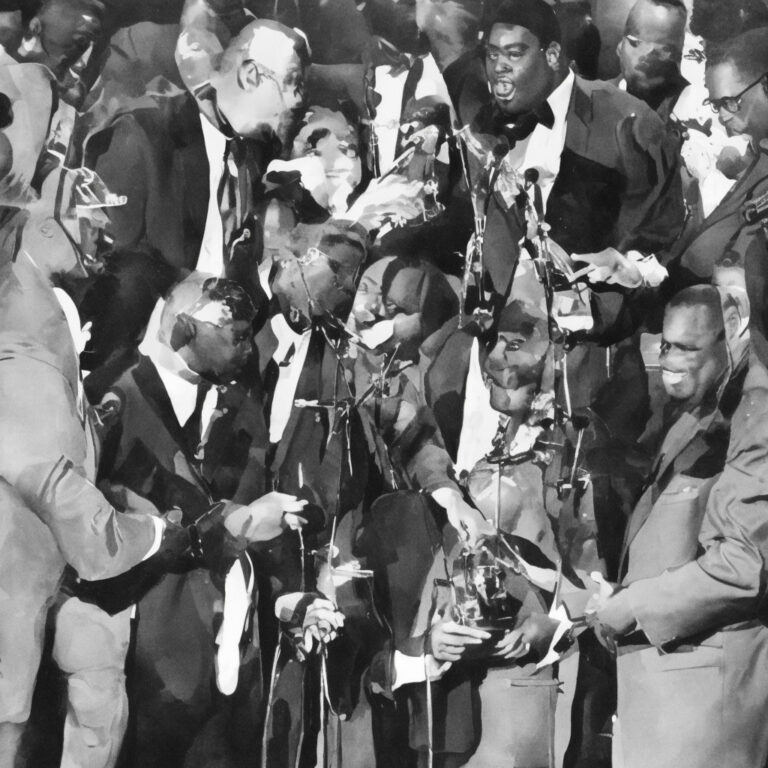
As one of The Notorious B.I.G.’s most iconic and successful tracks, “Mo Money Mo Problems” has certainly left its mark on the music industry. Released as the second single off his posthumous 1997 album, “Life After Death,” the song features Puff Daddy and Mase, and has received numerous accolades and made various appearances in popular culture.
“Mo Money Mo Problems” achieved commercial success, peaking at number one on the Billboard Hot 100 chart and remaining there for two consecutive weeks. The song’s popularity also earned it a nomination for Best Rap Performance by a Duo or Group at the 1998 Grammy Awards, further solidifying its status as a hip-hop classic.
The song’s infectious beat and memorable lyrics have made it a staple in various movie and television soundtracks, such as the films “Bad Boys,” “Rush Hour,” and “10 Things I Hate About You,” as well as TV shows like “New York Undercover” and “Ballers.” Additionally, “Mo Money Mo Problems” has been featured in video games such as “Grand Theft Auto V” on the in-game radio station, West Coast Classics.
Over the years, several artists have paid homage to “Mo Money Mo Problems” by producing their own cover versions. In 2018, singer-songwriter Rozzi released a stripped-down, soulful rendition of the track, showcasing her powerful vocals while adding a new depth to the classic hit. Additionally, New York City-based band The SKINS put their own unique spin on the song, incorporating elements of rock and electronic music.
Despite being more than two decades old, “Mo Money Mo Problems” continues to resonate with fans and remains a staple in the world of hip-hop. Its various accolades, appearances, and adaptations have helped solidify its status as an iconic and evergreen track in music history.
Breaking Down the Hit’s Anatomy
Delving into the musical structure of “Mo Money Mo Problems,” we find that this iconic track is set in the key of D-flat major. The key choice is particularly interesting, as D-flat major is not a common one in contemporary hip-hop, but it lends the song a unique flavor that sets it apart from other tracks in the genre. This also allows for a unique blend of chords that form the foundation of the song’s harmonic progression, which is essentially a four-chord loop consisting of D-flat major, A-flat major, B-flat minor, and G-flat major.
The tempo of “Mo Money Mo Problems” clocks in at a lively 104 beats per minute (BPM), reflecting the energetic groove that permeates the track. The drumbeat is a classic hip-hop breakbeat, with the kick drum and snare driving the rhythm while the hi-hats add a layer of syncopation. The beat, combined with the tempo, creates an infectious groove that makes it nearly impossible not to nod your head or tap your feet along.
One of the most distinctive aspects of the song is its sample of Diana Ross’s “I’m Coming Out.” The sample is looped throughout the track, providing an instantly recognizable hook that anchors the song. The horn section from the original track is also brilliantly repurposed, adding a sense of grandeur and triumph to the mix. This use of sampling is a testament to the skill of the song’s producer, Sean “Puff Daddy” Combs, who masterfully weaves the sample into the fabric of “Mo Money Mo Problems” and creates a fresh, innovative sound.
The verses in “Mo Money Mo Problems” feature a call-and-response structure between The Notorious B.I.G. and fellow rapper Ma$e. The two trade bars back and forth, with each artist’s distinct flow and lyrical prowess shining through. The choice to have multiple artists contributing verses to the track adds a layer of complexity to the song, as listeners are treated to a variety of vocal textures and lyrical styles.
In summary, the magic of “Mo Money Mo Problems” lies in its unique key, catchy chord progression, energetic tempo, and creative sampling. The track’s structure is a masterclass in hip-hop production and songwriting, skillfully blending different elements to create a timeless hit that continues to thrill listeners to this day.



